#DogDiet
Explore tagged Tumblr posts
Text
#dogfood#dogtreats#dognutrition#dogdiet#puppyfood#dogfoodrecipes#dogfoodreviews#dogfoodadvice#dogfoodbrands#dogfoodingredients#pets#petfood#dogs#dog food#cats
2 notes
·
View notes
Text
4 Foods To Avoid If Your Dog Has Arthritis
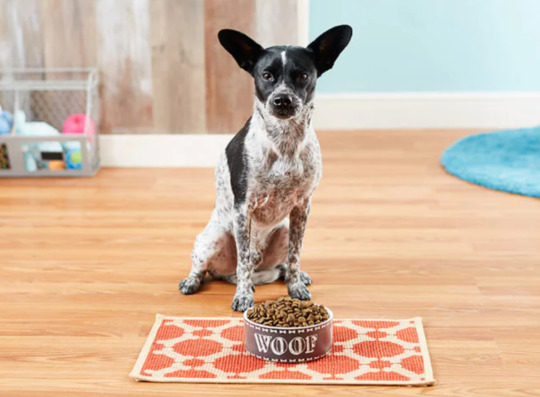
As in people, there are many outside factors that can have an impact on your dog’s arthritis. You may find he enjoys playing more in warmer, drier weather, or that he is more active after taking joint supplements for a few months. Diet is another crucial component for arthritis in a dog.
Obesity can put additional stress on the joints and certain foods may help control arthritic flare-ups. Additionally, certain foods can promote or decrease inflammation levels, which contribute to arthritic pain levels. By monitoring your dog’s diet and eliminating certain foods, he may be able to live a more comfortable life. Here are 4 foods to avoid if your dog has arthritis.
1. Carbohydrates
Dogs who are arthritic may want to avoid these two types of carbohydrates: nightshade vegetables and grains/starches. These both contribute to inflammation, a main component of arthritis. Grains like wheat, rice, barely, and corn can fluctuate the blood sugar levels and increase swelling. Nightshade vegetables including potatoes, eggplant, tomatoes, and peppers can also contribute to arthritis symptoms. If you are using pet store food, check the ingredients carefully. Some foods that are grain-free use potatoes as a substitute.
2. Fatty Proteins
Meats that are high in fat contain high levels of omega 6 fatty acids – which contribute to inflammation. Giving your arthritic dog a lean protein source is ideal. Protein is important because it supports strong muscles. Feeding your dog a lean meat, or grass fed meat, can supply calories in the form of healthier omega 3 fatty acids.
3. Fats
In a diet, fats supply the most calories, therefore their levels and qualities must be closely monitored. Obesity is directly linked to the onset and severity of arthritis. If your dog is overweight, you should first promote weight loss. Each extra pound of weight your dog carries leads to further breakdown of the joint. The quality of fat you choose for your dog’s diet is important. Some fats can cause inflammation in the body, leading to pain and discomfort, while others balance out the system and decrease inflammation. Adding omega 3 fatty acids to your dog’s diet will help balance the potency of omega 6 and decrease its inflammatory effects.
4. Oil
It’s best to avoid plant-based oils including sunflower, safflower, corn and vegetable oils. These oils contain arachidonic acid – an omega 6 fatty acid. As mentioned before, omega 6 fatty acids increase inflammation. More specifically, the arachidonic acid in the oils changes into inflammatory compounds and high levels of these are associated with elevated inflammation.
Many times arthritis in your dog can be hard to spot. Subtle changes such as a decrease in desire to play, shorter walks, and more time sleeping could seem like nothing, but may actually be the start of arthritis. Diet is just one outside factor that can contribute to the symptoms of arthritis in your dog. To support overall joint health in your dog, we recommend seeing a veterinarian for a proper diagnosis, as well as incorporating an all-natural daily joint supplement into your dog’s diet. This will ensure your pet is on the path to aging gracefully and living a long, rewarding life.
6 notes
·
View notes
Text
Are Bully Sticks a Safe Choice for Your Puppy?
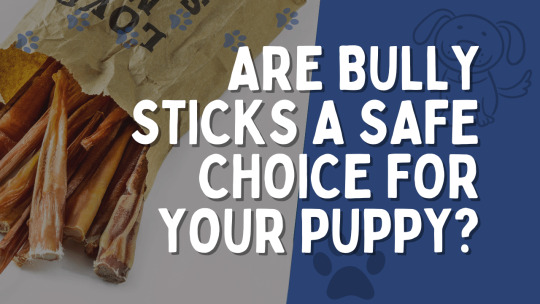
As a pet parent, you're always on the lookout for ways to keep your furry friend happy and healthy. One of the key aspects of this is providing them with the right kind of treats. This is especially important when your pet is a puppy, as their growing bodies need the right nutrients and their developing teeth need appropriate chew toys. One popular choice among dog owners is bully sticks. But the question that often arises is, "Are bully sticks OK for puppies?" Bully sticks, also known as pizzle sticks, are a type of dog treat made from the dried and hardened penis of a bull. They're a favorite among many dogs due to their tough texture and savory flavor. However, as with any pet product, it's important to understand what you're giving your puppy and whether it's safe for them. Importance of Choosing the Right Treats for Puppies

Choosing the right treats for your puppy is crucial for several reasons. Firstly, puppies have different nutritional needs compared to adult dogs. They require a balanced diet rich in protein, fats, and certain vitamins and minerals to support their rapid growth and development. Therefore, the treats you give your puppy should ideally contribute to their nutritional needs rather than just being empty calories.Read More about Bully Sticks and Puppies Read the full article
#Bullystickalternatives#Bullysticks#Dentalhealth#Dogcare#Dogchews#Dogdentalhealth#Dogdiet#Dogfood#Doghealth#Dognutrition#Dogproducts#Dogsafety#Dogtraining#Dogtreats#petcare#Petfood#Pethealth#Petnutrition#Petproducts#petsafety#Puppycare#Puppychews#Puppydiet#Puppyfood#Puppygrowth#Puppynutrition#Puppyproducts#Puppysafety#Puppytraining#Puppytreats
2 notes
·
View notes
Text
Royal Canin Dog Food: Comprehensive Guide to Nutrition and Health Benefits

Introduction
to Royal Canin Dog Food Royal Canin has long been a trusted name in the world of pet nutrition, known for its commitment to creating tailored, science-backed formulas. For dog owners who prioritize balanced nutrition, Royal Canin offers a wide range of products that cater to dogs’ specific needs based on breed, age, and health concerns. mor information
Why Choose Royal Canin for Your Dog?
is one of the most impactful decisions you can make for your pet’s health. Royal Canin stands out because it combines high-quality ingredients with rigorous scientific research, ensuring that each formula supports your dog’s unique nutritional needs. Royal Canin Dog Food
History of Royal
Canin and Their Mission The goal of Royal Canin, which was established in 1968 by a veterinarian, has always been to put pets’ health and welfare first. . With a focus on innovation and scientific research, Royal Canin has developed specialized diets that cater to the nutritional requirements of different dog breeds and sizes.
Understanding the Nutritional Philosophy of Royal Canin
Royal Canin believes that every dog is unique, with specific dietary needs. The brand uses a science-driven approach to develop products that support dogs’ health based on factors such as age, breed, and lifestyle. This individualized approach is what makes Royal Canin a go-to choice for many pet owners and veterinarians.
Ingredients Used in Royal Canin Dog Food
Royal Canin emphasizes using high-quality, natural ingredients that offer essential nutrients. Here’s a breakdown of the key ingredients you’ll find in their products:
High-Quality Protein Sources: Royal Canin Dog Food
Protein is essential for muscle development and energy. Royal Canin uses animal-based protein sources, such as chicken and lamb, to meet dogs’ dietary needs.
Carbohydrates for Energy:
Carbohydrates, like rice and barley, are included for sustained energy. These carbs are easily digestible, ensuring your dog’s body receives consistent energy throughout the day.
Essential Vitamins and Minerals:
Each formula includes a mix of vitamins and minerals for a complete diet. Immunity and bone strength are two aspects of general health that are supported by these nutrients..
Specialized Nutrition for Different Breeds Royal Canin Dog Food Royal Canin offers breed-specific formulas that cater to the unique needs of different dog breeds.
Breed-Specific Formulas:
Each formula is designed with the breed’s specific nutritional needs in mind, considering factors like jaw shape, eating habits, and common health issues. Royal Canin Dog Food
Examples of Breed-Specific Dog Foods:
Royal Canin has specific formulas for breeds such as Labrador Retrievers, German Shepherds, and Bulldogs, addressing breed-related concerns like skin health, joint support, and coat care.

Puppy Formulas:
Formulated with growth and development in mind, these recipes support immune system strength and energy levels.
Adult Dog Formulas:
Adult dogs need balanced energy, and Royal Canin’s adult formulas are designed to support an active lifestyle and maintain a healthy weight .Royal Canin Dog Food
Senior Dog Formulas:
These formulas offer the extra support senior dogs need, from joint health to maintaining lean muscle mass.
Dietary Options for Different Health Conditions For dogs with special dietary needs, Royal Canin has tailored solutions that cater to various health concerns.
Royal Canin for Digestive Health:
Some dogs have sensitive stomachs, and Royal Canin’s digestive support formulas include ingredients that are easy to digest and promote gut health. Royal Canin Dog Food
Weight Management Formulas:
These products help dogs maintain a healthy weight without sacrificing essential nutrients.
Skin and Coat Care: Royal Canin Dog Food
Formulated with omega fatty acids, these foods support a shiny coat and healthy skin.
Support for Joint Health: For larger breeds or older dogs, Royal Canin’s joint support formulas include ingredients like glucosamine and chondroitin.
Benefits of Royal Canin Prescription Diets For pets with specific medical needs, Royal Canin offers a line of prescription diets available through veterinarians.
Veterinary-Exclusive Formulas:
These diets are carefully crafted to support dogs with chronic health conditions such as kidney disease, diabetes, or allergies.
Common Prescription Options: Common options include urinary health, weight control, and gastrointestinal support, ensuring your pet receives the proper care through their diet.
Royal Canin Wet vs. Dry Dog Food
Royal Canin offers both wet and dry dog food options, each with its own benefits.
Differences Between Wet and Dry:
Wet food is generally easier to digest and more palatable, while dry food supports dental health and is easier to store.
Which One is Right for Your Dog?
: Depending on your dog’s dietary preferences and specific health requirements, either option can be suitable.
Royal Canin for Small, Medium, and Large Breed Dogs Royal Canin offers tailored formulas based on the size of your dog, as nutritional needs can vary greatly by breed size.
Small Breed Options: Royal Canin Dog Food
High in energy to support active small dogs, with kibble sizes designed for smaller mouths.
Medium Breed Options:
Formulated with balanced nutrients for moderate energy levels and digestion.
Large Breed Options :Royal Canin Dog Food

Transitioning your dog to Royal Canin should be done gradually.
Tips for Smooth Transition: Mix increasing amounts of Royal Canin with your dog’s current food over 7–10 days.
Recommended Feeding Guidelines: Follow the instructions on the Royal Canin package to ensure proper portion sizes. Royal Canin Dog Food
Understanding the Feeding Guidelines on Royal Canin Packaging Royal Canin provides detailed feeding guidelines on each package, helping pet owners determine the correct serving size based on factors such as weight, age, and activity level.
Quality and Safety Standards of Royal Canin
Royal Canin is committed to maintaining high standards for quality and safety. They use rigorous testing and high-quality control processes, ensuring each product is safe and nutritious for your pet.
Conclusion
Royal Canin stands out as a reliable choice for pet nutrition, offering specialized formulas to support every dog’s unique needs. From age-specific diets to breed-focused options and veterinary-exclusive formulas, Royal Canin provides a wide variety of choices tailored to improve the health and well-being of dogs everywhere.
FAQs
1. What makes Royal Canin different from other dog foods?
Royal Canin specializes in tailored nutrition, creating formulas based on factors like breed, age, and health needs, supported by scientific research. Royal Canin Dog Food
2. Is Royal Canin suitable for all dog breeds?
Yes, Royal Canin has breed-specific formulas as well as general options that cater to dogs of all breeds.
3. How do I choose between wet and dry Royal Canin food?
Choose based on your dog’s health needs and preferences While dry food promotes tooth health, wet food may be easier to digest…
4. Can I give my dog Royal Canin prescription food without consulting a vet?
No, prescription diets should be given only under the guidance of a veterinarian to address specific health issues.
5. How long does it take to transition my dog to Royal Canin?
To prevent digestive issues, a 7–10 day gradual shift is advised.
#RoyalCaninDogFood#DogFoodReview#BestDogFood#DogNutrition#HealthyDogs#PetCareTips#DogDiet#TopDogFood#PetFoodBrands#DogHealth
0 notes
Text
#puppyweightloss#dogdiet#healthydog#fitpuppy#puppyfitness#doghealth#weightlossjourney#puppylove#dogsofinstagram#petwellness#puppytraining#dognutrition#canineweightloss#puppygoals#1000 calorie deficit
0 notes
Text
Common Fruits Dogs Can Eat: Spotlight on Papaya-2024
Hey, fellow dog lovers! 🐾
If you’re like me, you probably want to ensure your furry friend gets all the nutrients they need to stay healthy and happy. One question I get asked a lot is, “Can dogs eat papaya?” Let’s dive into this tropical fruit and discover if it’s safe for our pups!
What’s So Great About Papaya?
Papaya isn’t just delicious; it’s also packed with vitamins A, C, and E! 🌟 These nutrients are essential for your dog’s immune system, keeping their skin and coat healthy. Plus, papaya contains fiber, which can help with digestion. If your dog has tummy troubles, a little papaya might do the trick!
Safety First! ⚠️
Now, before you start sharing your papaya with your dog, there are some important things to keep in mind:
Remove the Seeds: Papaya seeds can be a choking hazard. Always take them out before giving your dog any papaya.
Peel the Skin: While the skin isn’t toxic, it can be hard for dogs to digest. Stick to the soft, yummy flesh.
Start Slow: If it’s your dog’s first time trying papaya, give them a small piece to see how they react. Every dog is different!

How to Serve Papaya to Your Pup 🍽️
Want to know how to add papaya to your dog’s diet? Here are some fun ideas:
Fresh Treats: Cut papaya into bite-sized pieces and watch your dog enjoy a juicy snack. Frozen Goodies: Freeze small chunks for a cool treat on a hot day. Perfect for summer! Meal Mixer: Chop it up and mix it into their regular food for an added flavor boost. Learn More! 📚
Curious about the benefits of papaya for your pup? I’ve got a detailed article just for you! here is a more detailed about papaya for your pup.
Let’s make mealtime healthy and exciting for our furry friends! Have you ever given your dog papaya? Share your experiences in the comments! 🐕💖
#animals#dogs#baby animals#DogNutrition#CanDogsEat#PapayaForDogs#HealthyPets#PetCare#DogHealth#FruitsForDogs#DogTreats#DogOwners#PetWellness#DogDiet#HealthyDog#DogLovers#PetFood#PetAdvice
0 notes
Text
Improve your dog diate with a dry dog food.

Top 10 Dry Dog Food Tips You Can't Miss! Are you looking to improve your dog's diet and overall health? In this video, we share the top 10 essential dry dog food tips that every pet owner needs to know. From choosing the best brands to understanding ingredient labels, we cover all the key points to ensure your furry friend gets the best nutrition possible.
1 note
·
View note
Text
The Healthiest Food to Feed Your Dog

Our furry companions deserve the best when it comes to their diet. Proper nutrition plays a crucial role in their overall health and longevity. If you're wondering about the healthiest food to feed your dog, it's essential to understand their unique nutritional needs and how to meet them effectively.
YOU CAN ALSO TRY THIS PRODUCT: Super Pet Total Health
1. Understanding Your Dog's Nutritional Needs
Dogs, like humans, require a balanced diet to thrive. This means providing them with the right mix of proteins, carbohydrates, fats, vitamins, and minerals. The nutritional needs of a dog can vary based on factors such as age, breed, activity level, and health condition. Puppies, for instance, have different dietary requirements compared to adult or senior dogs. Large breeds may have specific needs related to joint health, while small breeds might require higher-calorie diets due to their faster metabolism.
2. Key Components of a Healthy Dog Diet
a. Protein Sources and Their Importance: Protein is crucial for muscle development and repair. Opt for high-quality animal-based proteins like chicken, turkey, beef, or fish.
b. Carbohydrates for Energy and Fiber: Carbohydrates provide energy and essential fiber for digestion. Choose whole grains like brown rice or oats over processed grains.
c. Essential Fats and Oils: Healthy fats are essential for a shiny coat and brain function. Incorporate sources like salmon oil or flaxseed oil into your dog's diet.
YOU CAN ALSO TRY THIS PRODUCT: Super Pet Total Health
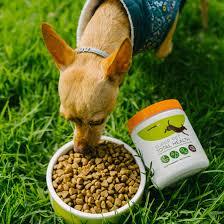
3. Commercial Dog Food vs. Homemade Meals
Choosing between commercial dog food and homemade meals is a decision that many pet owners face. Each option has its pros and cons.
a. Pros and Cons of Commercial Dog Food: Commercial dog food is convenient and formulated to meet specific nutritional standards. However, not all brands are equal in terms of quality ingredients.
b. Benefits of Homemade Dog Meals: Homemade meals allow you to have more control over ingredients and freshness. You can tailor recipes to your dog's preferences and dietary needs. However, homemade meals require careful planning to ensure balanced nutrition.
4. Choosing High-Quality Commercial Dog Food
When selecting commercial dog food, it's essential to be a savvy consumer.
a. Reading and Understanding Dog Food Labels: Look for named animal proteins as the first ingredient. Avoid foods with excessive fillers like corn or soy.
b. Selecting Appropriate Brands and Formulations: Choose reputable brands known for their commitment to quality and safety. Consider specific formulations based on your dog's age, size, and health condition.
YOU CAN ALSO TRY THIS PRODUCT: Super Pet Total Health
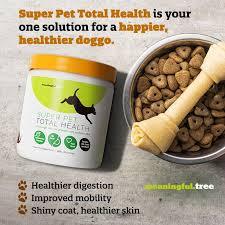
5. Common Nutritional Mistakes to Avoid
To ensure your dog's health, avoid common nutritional pitfalls.
a. Overfeeding and Portion Control: Obesity is a significant issue in dogs. Measure portions accurately and adjust based on your dog's activity level.
b. Avoidance of Harmful Ingredients: Steer clear of artificial additives, preservatives, and excessive salt or sugar. These can contribute to health problems over time.
6. Incorporating Fresh Ingredients in Your Dog's Diet
Fresh ingredients can provide essential nutrients and variety to your dog's meals.
a. Benefits of Fresh Fruits and Vegetables: Incorporate safe fruits and veggies like carrots, apples, and green beans. These provide vitamins, minerals, and antioxidants.
b. Safe Protein Sources: Opt for lean meats such as chicken or turkey, and avoid feeding raw meat to reduce the risk of bacterial contamination.
YOU CAN ALSO TRY THIS PRODUCT: Super Pet Total Health
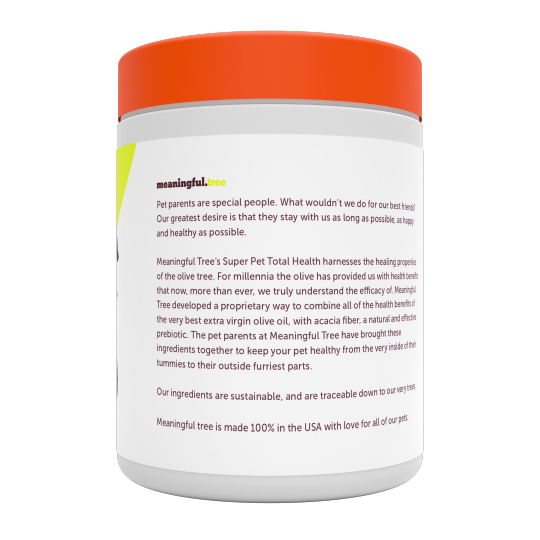
7. Supplements for Optimal Canine Health
Certain supplements can complement your dog's diet.
a. Necessary Supplements for Dogs: Omega-3 fatty acids, glucosamine, and probiotics can benefit dogs' skin, joints, and digestion. However, consult with your veterinarian before adding supplements to your dog's regimen.
8. Hydration and Its Role in a Dog's Health
Always ensure your dog has access to clean, fresh water.
a. Importance of Clean, Fresh Water: Hydration is vital for proper organ function and overall health.
b. Signs of Dehydration in Dogs: Watch for symptoms like dry gums, lethargy, or decreased urination, which could indicate dehydration.
YOU CAN ALSO TRY THIS PRODUCT: Super Pet Total Health
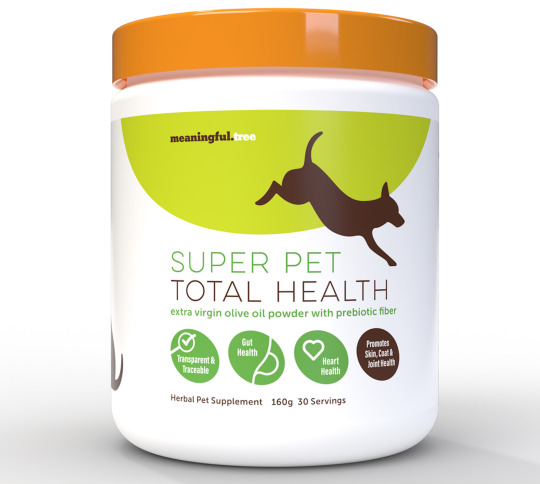
9. Understanding Allergies and Food Sensitivities
Dogs, like humans, can develop allergies or sensitivities to certain foods.
a. Common Food Allergens in Dogs: Dairy, wheat, and certain proteins like beef or chicken can trigger allergic reactions.
b. Identifying Signs of Food Allergies: Keep an eye out for symptoms like itching, gastrointestinal upset, or chronic ear infections.
10. Transitioning Your Dog to a New Diet
When introducing a new diet, do so gradually.
a. Gradual Diet Changes: Transition your dog's diet over several days to minimize digestive upset.
b. Monitoring for Adverse Reactions: Watch for any signs of intolerance or allergies when switching to a new food.
In conclusion, feeding your dog the healthiest food requires thoughtful consideration of their nutritional needs and careful selection of ingredients. By providing a balanced diet tailored to your dog's requirements, you can contribute to their overall health and well-being. Consult with your veterinarian for personalized dietary recommendations based on your dog's age, breed, and health status. A well-fed dog is a happy and healthy companion!
YOU CAN ALSO TRY THIS PRODUCT: Super Pet Total Health
0 notes
Text
Homemade Nutritious Meals for Your Dogs

Upgrade your pup's dinner routine! with some delicious, homemade Nutritious Meals for Dogs.
#HealthyDogs#HomeCooked#DogMeals#Nutrition#PetCare#DogLovers#Homemade#PetHealth#DogDiet#HomemadeDogFood#NutritiousMeals#TrendingDogFood#HealthyEatingForDogs
0 notes
Text
Thepetpantry.com

#cute dogs#dogs of tumblr#dogsofinstagram#dogs#dogfood#cat food#best pet food ever#PetPantry#DogFood#HealthyDogFood#NaturalDogFood#DogNutrition#PetHealth#DogDiet#PetCare#DogsOfTumblr#DogLovers#PetParents#PuppyLove#DogLife#PetFood#FeedYourDogRight#PetProducts#DogWellness#CanineCare#FurryFriends#PetLove#DoggoEats#DogMomLife#DogDadLife
0 notes
Text
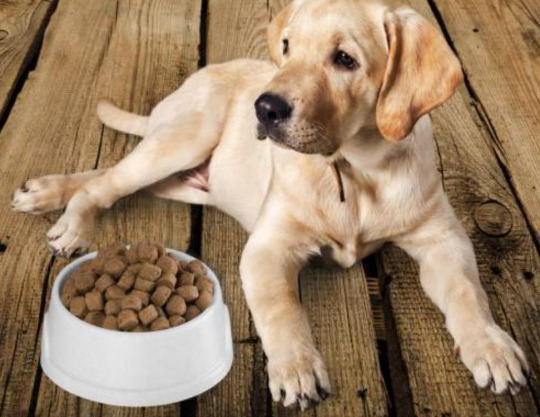
🐕🦺7 Foolproof Tips to Help Your Dog Lose Weight This Year🐾🍖 🐕🚀 Introduction As a pet owner, you want the best for your furry friend, and that includes helping them maintain a healthy weight. Just like humans, obesity in dogs can lead to a variety of health is... 🐕🚀 👇 CLICK TO LEARN MORE 👇
0 notes
Text
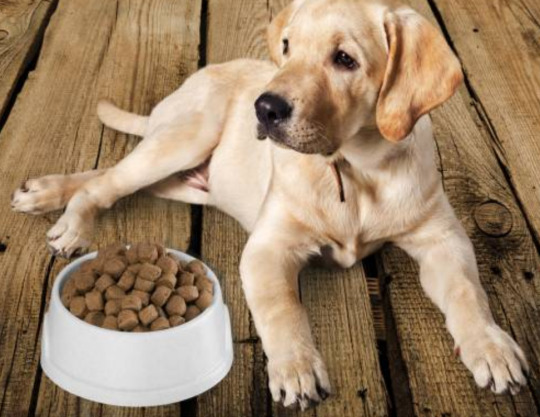
🐾🏡7 Foolproof Tips to Help Your Dog Lose Weight This Year🐾🌟 🐕🦽 Introduction As a pet owner, you want the best for your furry friend, and that includes helping them maintain a healthy weight. Just like humans, obesity in dogs can lead to a variety of health is... 🐾💭 👇 READ MORE 👇
0 notes
Text
When a dog has raspberry jam 💩:
-It can be caused by something he ate & is a Gastro issue
-It could be caused by switching his food from
Hypoallergenic food to lamb-based food (kind of like vegans eating meat again and they may throw up)
-He could have a parasite in his stomach
-It’s not caused by dehydration
0 notes
Link
#CanDogsEatRaspberries#caninediet#Dogdiet#dogfoodalternatives#Doghealth#Dognutrition#DogTreatIdeas#dogwellness#FeedingDogsFruit#healthydogtreats#NaturalDogTreats#petcare#RaspberriesforDogs#RaspberryBenefitsforDogs#Safefruitsfordogs
0 notes
Text
How to Keep Your Pet Healthy? Try the Best Dog Food Options!

Introduction
Keeping your dog healthy goes beyond regular vet checkups and exercise. One of the most crucial factors in ensuring your furry friend’s long and happy life is providing the right nutrition. Just like humans, dogs need a balanced diet filled with essential nutrients to maintain their health. But with so many options available, choosing the best dog food can feel overwhelming. So, how do you pick the right food for your pet?
In this article, we’ll walk you through everything you need to know about dog food, from understanding labels to choosing the best diet. Whether you’re a new pet parent or a seasoned dog lover, the right food can make all the difference.

Why Nutrition Matters for
Your Dog’s Health haw to keep your pet healthy
A healthy dog starts with proper nutrition. Dogs, like humans, need a balance of protein, carbohydrates, fats, vitamins, and minerals to stay healthy. High-quality food can improve your dog's coat, energy levels, and overall well-being.
Vital Nutrients for options
Your dog’s diet should include:
Protein: Essential for muscle development and repair. Fats: Provide energy and support brain and skin health. Carbohydrates: Offer a quick source of energy. Vitamins and Minerals: Support immune function and organ health. The quality of these nutrients matters just as much as their presence in the food.
How Food Quality Affects Lifespan and Well-being
Poor-quality dog food can lead to health problems like obesity, digestive issues, and skin conditions. High-quality food, on the other hand, supports better digestion, a shiny coat, and even extends your dog’s lifespan.
Understanding Dog Food Labe
Decoding Ingredient haw to keep your pet healthy Decoding dog food labels is key to choosing the right product. Pet food companies use clever marketing to make their products seem healthier than they are.
Look for whole ingredients like chicken, beef, or fish listed as the first ingredient. Avoid foods with unnecessary fillers like corn, soy, and animal by-products.
What to Look for in High-Quality Dog Food
High-quality dog food should:
List whole proteins as the primary ingredient. Include healthy fats and limited fillers.
Avoiding Harmful Additives Common additives like BHA and BHT can be harmful over time.
Types of Dog Food Available
There’s a wide range of dog food types to choose from. Understanding the differences can help you pick the best option for your dog’s needs.
Dry Dog Food (Kibble) haw to keep your pet healthy
Kibble is the most common type of dog food and offers convenience for storage and feeding.
Wet Dog Food (Canned)
Wet dog food contains more moisture, making it ideal for dogs that need extra hydration or have dental issues.
Raw Food Diet haw to keep your pet healthy
Some pet owners swear by raw food, which consists of uncooked meat, bones, and organs. However, it requires careful preparation to ensure safety and balance.
Homemade Dog Food If you prefer more control over your dog's diet, you can make their food at home. It’s important to consult your vet to ensure your homemade meals meet all your dog's nutritional needs.
Benefits of Dry Dog Food (Kibble)
Convenience and Storage
Kibble is easy to store and lasts longer than wet food, making it convenient for busy pet parents.
Oral Health Benefits The crunchiness of kibble helps scrape away plaque, promoting better dental health.
Nutritional Balance Many kibble options are formulated to provide a balanced diet in every bite.
Advantages of Wet Dog Food (Canned)
Higher Moisture Content Wet food provides more hydration, which is beneficial for dogs who don’t drink enough water.
Taste Appeal for Picky Eaters Dogs often find wet food more flavorful, making it a great option for picky eaters.
Suitable for Dogs with Dental Issues Wet food is softer and easier to chew, which is ideal for older dogs or those with dental problems.
What is a Raw Food Diet options
A raw food diet consists of uncooked meat, bones, and vegetables.
Pros and Cons of Feeding Raw try the best dog food options While proponents claim it’s closer to a dog’s natural diet, raw food can pose risks if not handled properly. It may contain harmful bacteria, and balancing nutrients can be challenging.

Safety Concerns and Tips try the best dog food options
If you choose a raw diet, ensure you use fresh ingredients and follow strict hygiene practices to prevent contamination.
Homemade Dog Food – What You Should Know The Benefits of Making Your Dog’s Food Making your dog’s food allows you to control the ingredients and ensure your pet isn’t consuming harmful fillers or preservatives.
Balancing Nutrients at Home
Consult your vet or a pet nutritionist to create balanced meals that meet your dog’s dietary needs.try the best dog food options
Potential Pitfalls and How to Avoid Them Homemade food can lack essential nutrients if not prepared correctly. Supplementing with vitamins and minerals might be necessary to fill any gaps.
How to Choose for Your Pet
Assessing Your Dog’s Unique Needs Consider your dog’s age, size, breed, and activity level when selecting food.
Consulting Your Vet for Dietary Recommendations Your vet can help you choose the right food based on your dog's health needs.
Testing and Adjusting Your Dog’s Diet
It may take some time to find the perfect food. Keep an eye on your dog’s health and adjust the diet if necessary.
Common Health Issues Related to Poor Nutrition
Obesity Overfeeding and poor-quality food can lead to obesity, which increases the risk of diabetes and heart problems.try the best dog food options
Skin Allergies haw to keep your pet healty
Some dogs are allergic to common ingredients like chicken or grains, leading to itchy skin and hair loss.
Digestive Problems
Low-quality dog food often contains fillers that can upset your dog’s stomach.
The Role of Supplements in Dog Nutrition When and Why to Use Supplements Supplements can be helpful if your dog has specific health needs, such as joint issues or skin problems.
Common Supplements for Dogs
Glucosamine for joint health, especially in older dogs or breeds prone to hip dysplasia and arthritis. Fish Oil for healthy skin and a shiny coat, thanks to its omega-3 fatty acids. Probiotics to improve digestion and boost immune system function. Multivitamins to ensure your dog is getting all necessary nutrients if their regular diet is lacking. However, before introducing any supplements, always consult with your vet to ensure they’re appropriate for your pet’s individual health needs.
Feeding Guidelines and Portion Control
How Much to Feed Your Dog Portion control is key to preventing obesity and ensuring your dog stays at a healthy weight. The amount of food your dog needs depends on several factors, including their age, size, activity level, and overall health. Most dog food brands include feeding guidelines on the packaging, but these should serve as general recommendations rather than hard-and-fast rules.

Importance of Portion Control in Preventing Obesity
Overfeeding is a common problem that can lead to weight gain and health complications like diabetes, arthritis, and heart disease. Stick to recommended portion sizes, and if your dog is gaining weight, consider reducing their portion slightly or incorporating more exercise into their routine.
Transitioning Your Dog to a New Food
Switching your dog’s food too quickly can lead to digestive issues like diarrhea or vomiting. It’s essential to transition your dog’s diet slowly to allow their system to adjust to the new food.
Step-by-Step Process to Avoid Stomach Upsets Day 1-2: Mix 75% of the old food with 25% of the new food. Day 3-4: Mix 50% of the old food with 50% of the new food. Day 5-6: Mix 25% of the old food with 75% of the new food. Day 7 and beyond: Switch entirely to the new food. Monitoring Your Dog’s Reaction to New Food During the transition, watch for any signs of digestive upset, such as loose stools, vomiting, or a decrease in appetite. If these occur, slow down the transition process or consult your vet.
Popular Dog Food Brands to Consider
With so many dog food brands on the market, it can be hard to know which ones offer the best quality. Here are a few well-liked choices to think about: Premium Dog Food Brands Orijen: Known for using whole prey ingredients and providing high-protein, biologically appropriate nutrition. Wellness CORE: Offers grain-free and protein-rich recipes with high-quality ingredients. Blue Buffalo: Focuses on natural ingredients and has a variety of options for different dietary needs.
Budget-Friendly Options That Don’t Compromise Quality
Diamond Naturals: Provides a good balance of quality and affordability with natural ingredients and no fillers. American Journey: Offers high-quality, affordable food with real meat as the first ingredient. Grain-Free vs. Grain-Inclusive Diets There’s been debate about whether grain-free diets are better for dogs. While some dogs with specific allergies may benefit from a grain-free diet, most dogs can thrive on a grain-inclusive diet.
Conclusion
o find out what's best for your dog, speak with your veterinarian. Choosing the right dog food is essential for maintaining your pet's health and ensuring a long, happy life. From understanding labels to selecting the appropriate type of food for your dog’s unique needs, proper nutrition is the foundation of a healthy, thriving dog. By paying attention to ingredients, feeding guidelines, and making necessary adjustments based on your dog’s health, you can provide them with the nutrition they need to live their best life.
So, whether you opt for dry food, wet food, raw diets, or homemade meals, the goal is the same: a balanced, nutrient-rich diet tailored to your dog’s needs. In doing so, you'll help them stay healthy, active, and content.
FAQs
What is the best dog food for small breeds? Small breeds often require food specifically designed for their size and energy levels. Look for kibble that is smaller in size and packed with the right nutrients for their faster metabolism. Some good options include Blue Buffalo Life Protection Small Breed and Royal Canin Small Adult Dog Food.
How often should I feed my dog?
Most adult dogs do well with two meals per day. Puppies, however, may need to be fed three to four times daily due to their higher energy demands. Always follow your vet’s recommendations based on your dog’s age and activity level.
Is grain-free food better for dogs?
Grain-free food is beneficial for dogs with allergies or sensitivities to grains, but for most dogs, grains can be a valuable source of carbohydrates and fiber. Consult your vet to determine if your dog would benefit from a grain-free diet.
Can I feed my dog human food?
While some human foods are safe for dogs (like plain chicken or carrots), many others are toxic, such as chocolate, onions, and grapes. It’s best to stick to dog-specific food or consult with your vet before feeding human food to your pet.
What signs indicate that my dog isn’t getting proper nutrition?
Signs of poor nutrition in dogs include dull coat, frequent infections, lethargy, digestive issues, and unexplained weight loss or gain. If you notice any of these signs, consult your vet for dietary advice and potential adjustments to your dog’s food.
#DogFood#PetHealth#HealthyPets#BestDogFood#DogNutrition#PetCareTips#DogDiet#PetFoodGuide#HappyDogs#DogWellness
0 notes
Text
What Cooking Oil Is Safe for Dogs?
As a dog owner, you want to make sure your furry friend is happy and healthy. That includes being mindful of what you feed them, including what you cook with in the kitchen.
But what cooking oil is safe for dogs?
First, it's important to note that not all cooking oils are safe for dogs. In fact, some can be toxic and cause serious health problems for your pup. That's why it's crucial to choose the right oil when cooking for your dog.
Here are some safe cooking oils to use for your furry friend:
Coconut Oil - This is one of the most popular oils to use for dogs. It's high in medium-chain fatty acids, which can help with digestion, skin and coat health, and brain function. Plus, it has antibacterial and antifungal properties.
Olive Oil - This oil is a great source of healthy fats, including omega-3 and omega-6 fatty acids. It can help improve skin and coat health, and it may even reduce the risk of certain diseases.
Fish Oil - This oil is packed with omega-3 fatty acids, which can help reduce inflammation and improve joint health. It may also benefit heart and brain health.
It's important to note that while these oils are safe for dogs, they should still be used in moderation. Too much oil can lead to diarrhea or other digestive issues.
Also, if your dog has any health issues or is on any medication, it's always a good idea to check with your veterinarian before adding any new foods or supplements to their diet.
In conclusion, choosing the right cooking oil for your dog can help keep them healthy and happy. Stick with safe options like coconut oil, olive oil, or fish oil, and always use in moderation. Your pup will thank you!
More about this at : https://mobile-genius.com/2023/04/what-cooking-oil-is-safe-for-dogs/
#doghealth#cookingoil#safeoils#dogdiet#healthypet#pethealth#healthyfats#omega3#omega6#fattyacids#coconutoil#oliveoil#fishoil#antibacterial#antifungal#digestion#skinhealth#coathealth#brainhealth#jointhealth#inflammation#veterinarian#moderation#happydog#happyowner
1 note
·
View note